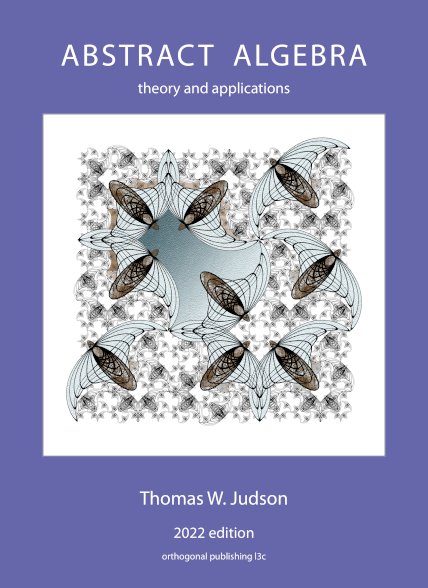Section 23.2 The Fundamental Theorem
The goal of this section is to prove the Fundamental Theorem of Galois Theory. This theorem explains the connection between the subgroups of
Proof.
Let
and
If
Corollary 23.15.
Example 23.16.
Proposition 23.17.
Proof.
A large number of mathematicians first learned Galois theory from Emil Artin’s monograph on the subject [1]. The very clever proof of the following lemma is due to Artin.
Lemma 23.18.
Proof.
Let
Suppose that
has more unknowns than equations. From linear algebra we know that this system has a nontrivial solution, say
The problem is that some of the
Suppose that at least one of the
must be another solution of the system. This is a nontrivial solution because
Let
Theorem 23.19.
Proof.
(1)
(2)
(3)
Corollary 23.20.
Proof.
Since
It follows that
Before we determine the exact correspondence between field extensions and automorphisms of fields, let us return to a familiar example.
Example 23.21.
In Example 23.4 we examined the automorphisms of
We are now ready to state and prove the Fundamental Theorem of Galois Theory.
Theorem 23.23. Fundamental Theorem of Galois Theory.
Let
- The map
- If
Proof.
(1) Suppose that
Statement (3) is illustrated in Figure 23.24. We leave the proof of this property as an exercise.
(4) This part takes a little more work. Let
Conversely, let
hence,
Finally, we must show that when
For
The kernel of
Hence, the image of
Example 23.25.
In this example we will illustrate the Fundamental Theorem of Galois Theory by determining the lattice of subgroups of the Galois group of
is a basis of
The Galois group
Subsection Historical Note
Solutions for the cubic and quartic equations were discovered in the 1500s. Attempts to find solutions for the quintic equations puzzled some of history’s best mathematicians. In 1798, P. Ruffini submitted a paper that claimed no such solution could be found; however, the paper was not well received. In 1826, Niels Henrik Abel (1802–1829) finally offered the first correct proof that quintics are not always solvable by radicals.
Abel inspired the work of Évariste Galois. Born in 1811, Galois began to display extraordinary mathematical talent at the age of 14. He applied for entrance to the École Polytechnique several times; however, he had great difficulty meeting the formal entrance requirements, and the examiners failed to recognize his mathematical genius. He was finally accepted at the École Normale in 1829.
Galois worked to develop a theory of solvability for polynomials. In 1829, at the age of 17, Galois presented two papers on the solution of algebraic equations to the Académie des Sciences de Paris. These papers were sent to Cauchy, who subsequently lost them. A third paper was submitted to Fourier, who died before he could read the paper. Another paper was presented, but was not published until 1846.
Galois’ democratic sympathies led him into the Revolution of 1830. He was expelled from school and sent to prison for his part in the turmoil. After his release in 1832, he was drawn into a duel possibly over a love affair. Certain that he would be killed, he spent the evening before his death outlining his work and his basic ideas for research in a long letter to his friend Chevalier. He was indeed dead the next day, at the age of 20.

